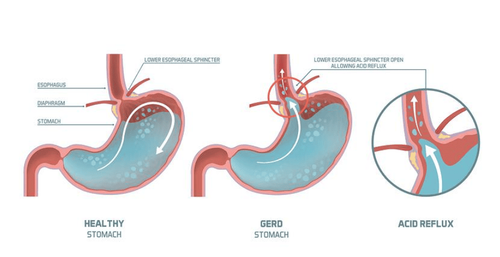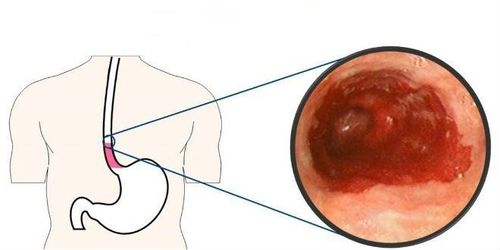This is an automatically translated article.
Article written by MSc Mai Vien Phuong - Department of Examination & Internal Medicine - Vinmec Central Park International General Hospital
Endoscopic images of eosinophilic esophagitis (VTQDBCAT) are quite diverse, including white patches, concentric rings, narrowing, mucosal loss of capillary network, paper thin esophagus, Schatzki ring, pseudo-diverticulum and on endoscopic ultrasonography a thickened esophageal wall can be seen.
Endoscopy helps to evaluate disease activity by identifying inflammation (signs of edema, exudation, longitudinal groove of the esophagus) and narrowing (esophageal ring, stricture) and then decide on treatment. esophageal dilatation when indicated as well as monitoring of response to treatment.
1. Under the microscope, what is the nature of these images?
According to the definition of VQDBCAT, which was released in 2011 and has been used until now, this is a disease that is diagnosed not only on histopathological results but also in close coordination with clinical symptoms. and evaluate esophageal dysfunction. The number of biopsies required for diagnosis and monitoring of response according to the European Gastroenterological Society consensus, requires at least 6 biopsies from different sites in the esophagus, especially in areas with endoscopic imaging. abnormal.
Because inflammation in VTQDBCAT is clustered or localized, it must be taken from at least two different sites of the esophagus including the proximal and distal segments. Sensitivity in histopathology increased with the number of biopsies and was highest when 6 pieces were taken.
Studies have documented that biopsies of exudative plaques/clumps and of longitudinal esophageal fissures result in higher eosinophil concentrations. If the patient is suspected of having VTQDBCAT but the endoscopic picture is normal, a biopsy should still be obtained because the diagnosis can be made by histopathology in the range of 10-32%.
In addition, in these cases to make the initial diagnosis, biopsies of both gastric mucosa and duodenal bulb should be obtained to rule out eosinophilic gastrointestinal inflammation.
Eosinophil count for diagnosis The diagnostic threshold for VTQBCAT is 15 BCAT cells/microfield with a standard size of 0.3 mm2. With this threshold, the diagnostic sensitivity and specificity were 100% and 96%, respectively. In addition, this number also helps to distinguish GERD more clearly. Often in GERD, the BCAT count is < 5 cells/field. However, these two conditions can sometimes coexist and are not mutually exclusive diagnoses.
In fact, there are still some limitations in histopathological assessment such as not really agreeing on the number of BCATs in the epithelial layer when stained with hematoxylin or there is no standardization of the size of the optical field, so it is possible to using the concept of “eosinophilic density in terms of BCAT/mm2 count in addition to BCAT/microfield count. In addition, communication between the pathologist and the clinician is necessary in these cases.
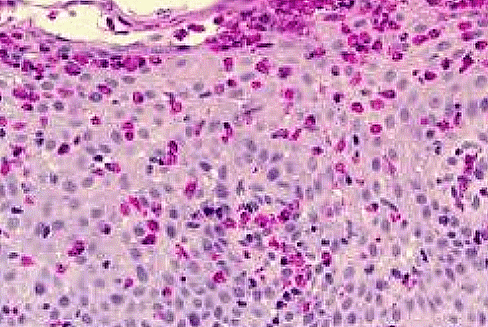
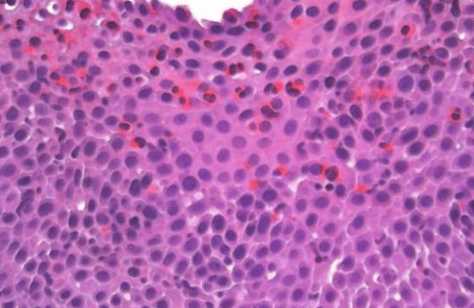
2. Histopathological rating scale for eosinophilic esophagitis
Like endoscopy, pathologists agree to use a scale to evaluate the degree of VTQDBCAT on histopathology. The scale with the highest level of confidence and consensus today is EoEHSS, which assesses severity and spread on a scale of 0 - normal to 3 - varies the most based on 8 characteristics:
BCAT density Baseline proliferation Abscesses BCAT BCAT superficial layer Interstitial dilatation Surface epithelial changes Abnormal keratinized epithelial cells Basal membrane fibrosis
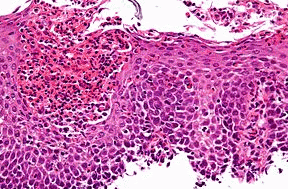
3. Post-treatment follow-up based on histopathological images
During treatment, monitoring response based on which criteria is still controversial. To date in most studies, response to treatment has been primarily based on improvement in clinical symptoms and reduction in BCAT counts.
However, improving the patient's symptoms in the presence of choking or dysphagia is not easy to assess because the patient can change his/her diet or there are patients whose symptoms worsen in episodes.
Therefore, it is also necessary to combine with the change of image on endoscopy and histopathology. According to the 2013 American Gastroenterological Society recommendations, complete histopathological response was defined as when the BCAT count was less than or equal to 6 cells/field or >90% reduction in the BCAT count. Most studies used the maximum number of BCATs counted, some used the mean.
In addition, it is necessary to pay attention to other characteristics related to inflammatory tissue damage such as basal proliferation, subepithelial fibrosis... The development of endoscopic and tissue severity grading scales Pathology is expected to provide effective tools for monitoring response after treatment.
Please dial HOTLINE for more information or register for an appointment HERE. Download MyVinmec app to make appointments faster and to manage your bookings easily.
References
Lucendo AJ, Molina - Infante J, Arias Asia et al (2017). Guidelines on eosinophilic esophagitis: evidence-based statements and recommendations for diagnosis and management in children and adults. United European Gastroenterol J,5(3): 335-58. Kinoshita Y, Ishimura N, Oshima N et al (2015). Systematic review: Eosinophilic esophagitis in Asian countries. World J Gastroenterol, 21 (27): 8433-40.








